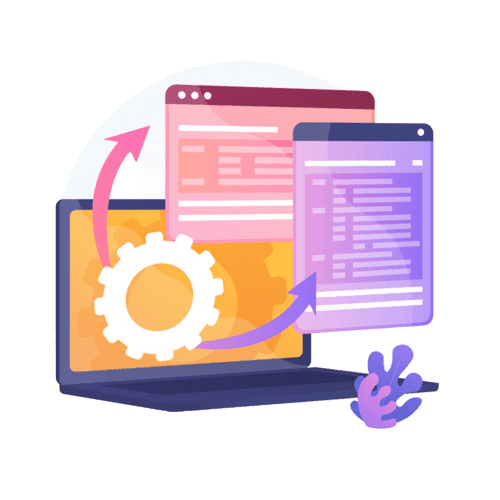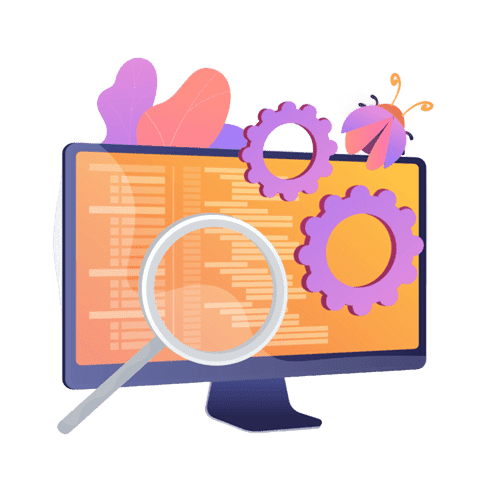Explore the impact of formal women’s networks in engineering, examining how internal and external networks empower female engineers, provide career support, and foster collective resistance against gender inequality in the profession. It draws on feminist theories of power and recent research findings.
Leveraging SPICE for Software Supplier Qualification in the Automotive Industry
In the ever-evolving automotive landscape, software quality is paramount for vehicle safety and performance. By implementing SPICE-based qualification mechanisms, car manufacturers like Fiat Auto can effectively evaluate their software suppliers, ensuring robust process capabilities and fostering a culture of continuous improvement. This standardized approach not only strengthens supplier relationships but also enhances the reliability and safety of the final automotive products.

As the automotive industry increasingly relies on software to enhance vehicle functionality and user experience, the importance of high-quality software acquisition has never been more critical. To address this need, car manufacturers are employing sophisticated assessment models to evaluate and qualify their software suppliers. One such method gaining traction is the SPICE (Software Process Improvement and Capability Determination) model, particularly its specialized version known as Automotive SPICE. This approach ensures that suppliers meet rigorous quality standards, thereby enhancing the overall reliability and safety of the vehicles produced.
The Rise of Software in Automotive Systems
Initially, Information Technology (IT) made its mark in automobiles through simple function controls. However, over time, IT has evolved significantly. Today, modern vehicles are complex systems with multiple electronic control units (ECUs) working together to perform time-critical and safety-critical functions. These advancements demand robust and reliable software systems, which has led to the necessity for stringent supplier qualification processes.
Challenges in Traditional Quality Management Systems
Historically, the automotive industry relied on standards like ISO 9001 for quality management. While these standards provided a good foundation, they often fell short in the realm of software quality assurance. The complexity of software systems, especially those that are safety-critical, required more focused and detailed assessment mechanisms. Thus, automotive manufacturers turned to models like SPICE and CMM (Capability Maturity Model) to evaluate and improve their software processes systematically.

%
Increasing Adoption of SPICE Assessments
According to a survey conducted by the Automotive SPICE initiative, over 70% of European automotive manufacturers have integrated SPICE-based assessments into their supplier qualification processes as of 2023. This demonstrates the industry’s growing commitment to standardizing software quality and improving collaboration with suppliers.
%
Impact on Supplier Improvement
A study published by the ISO found that companies using SPICE-based assessments experienced a 35% increase in the implementation of best practices among their software suppliers within two years of adopting the assessment model. This improvement led to a significant reduction in software defects and enhanced overall project delivery times.
Introducing SPICE-Based Supplier Qualification
In the early 2000s, leading European car manufacturers, including Fiat Auto, initiated efforts to integrate SPICE-based assessments into their software supplier qualification mechanisms. The goal was to establish a standard approach to evaluating the capability of software suppliers, ensuring consistency and quality across the supply chain. Fiat Auto’s implementation of the SPICE-based qualification mechanism, known as the ESCAPE project, provides an illustrative example of how these assessments are conducted and the benefits they bring.
The ESCAPE Project: A Case Study
Launched in 2001, the ESCAPE project aimed to improve Fiat Auto’s software acquisition process by assessing and qualifying software suppliers based on their process capability. The project was structured in two phases:
Phase A (2001-2004): This phase involved pilot assessments using the SPICE methodology on 17 Fiat Auto software suppliers. The focus was on key processes like Requirements Elicitation, System Requirements Analysis, Software Design, and System Testing, evaluated up to capability level 4. This phase provided Fiat Auto with a comprehensive understanding of its suppliers’ capabilities, identifying areas of strength and weakness.
Phase B: Building on the success of Phase A, Phase B introduced a formal supplier qualification mechanism. Suppliers were required to meet a defined capability profile to participate in Fiat Auto’s sourcing phase. While strict, this approach was flexible, allowing suppliers with lower capability levels to qualify provisionally if they committed to an improvement program.
Benefits of SPICE-Based Assessments
The SPICE-based qualification process has brought significant benefits to Fiat Auto and its suppliers:
- Enhanced Supplier Selection: By using SPICE assessments, Fiat Auto can objectively measure the quality and reliability of its software suppliers. This ensures that only suppliers with high capability profiles are selected, leading to better quality software and fewer issues in production vehicles.
- Improved Project Monitoring: The detailed insights gained from supplier assessments allow Fiat Auto to synchronize its project monitoring activities with supplier milestones, leading to more effective oversight and control of the software development process.
- Identification of Improvement Areas: SPICE assessments highlight potential areas for improvement, not only for suppliers but also within Fiat Auto’s own processes. This collaborative approach helps both parties enhance their practices and deliver better-quality software products.
- Better Communication and Collaboration: Establishing a common language based on SPICE process definitions facilitates clearer communication between Fiat Auto and its suppliers, reducing misunderstandings and enhancing collaboration.
Conclusion
The Future of Automotive SPICE
Looking forward, Fiat Auto and other major car manufacturers aim to integrate SPICE-based assessments more deeply into their supplier qualification processes. The ongoing development of Automotive SPICE, tailored specifically to the needs of the automotive industry, promises to bring even greater alignment and consistency across the European automotive sector. By setting common standards and expected capability profiles, the industry can ensure that all players—manufacturers and suppliers alike—are working towards the same high-quality benchmarks.
Conclusion
The implementation of SPICE-based software supplier qualification mechanisms represents a significant step forward for the automotive industry. By focusing on process capability and continuous improvement, car manufacturers can ensure that their vehicles meet the highest standards of quality and reliability. As the ESCAPE project demonstrates, the benefits of this approach are far-reaching, impacting not only the quality of the end product but also fostering better relationships and more effective collaboration across the automotive supply chain. As Automotive SPICE continues to evolve, it will play a crucial role in shaping the future of software development in the automotive industry, driving innovation, safety, and customer satisfaction.
References
- Fabbrini, F., Fusani, M., Lami, G., & Sivera, E. (2007). A SPICE-Based Software Supplier Qualification Mechanism in the Automotive Industry. Software Process Improvement and Practice, 12(5), 523-528.
- Automotive SPICE
Wanna know more? Let's dive in!
Mastermind Best Practices
Mastermind meetings offer business owners a collaborative space to share insights, solve challenges, and stay accountable. This guide explores best practices for successful mastermind groups, including clear goals, structured agendas, and fostering trust, ensuring participants gain valuable feedback, creative solutions, and long-term growth opportunities.
Five Relational Strategies for Mentoring
We explores five relational mentoring strategies, based on Relational Cultural Theory, to empower women professionals across industries. Emphasizing mutuality, authenticity, and connection, these strategies address power dynamics, foster growth, and build supportive networks, helping women navigate and thrive in their careers.
Coaching and Mentoring: Two Sides of the Same Coin?
Coaching and mentoring, while distinct in theory, often overlap in practice. Both aim to foster personal and professional growth. Context plays a key role in determining which approach is most effective, with organizations blending elements of both to meet diverse developmental needs.
The Professionalization of Mentoring Practices
Unlocking the full potential of mentoring means tackling some key issues head-on, like integrating the latest research, following best practices, understanding the dynamics of mentoring relationships, and aligning goals between mentors and mentees.
Holistic Mentoring Framework
The Holistic Mentoring Framework offers a holistic approach to mentoring, focusing on professional development, emotional well-being, and individualized support. By fostering trust and nonjudgmental relationships, it empowers early career professionals across industries to thrive, promoting continuous growth and addressing their unique challenges.
Best Practices in Mentoring: A Comprehensive Guide
Mentoring is like your personal growth hack. It’s all about connecting with someone who’s been there, done that, and leveling up together. It’s not just career tips – it’s real talk, learning, and support that helps you crush your goals.
ISO 9001 Gets a Glow-Up: Climate Edition
ISO 9001 Goes Green: The iconic quality management standard now includes climate action, pushing businesses to integrate eco-friendly practices. Get ready for a greener, cleaner approach to quality that’s all about saving the planet—one process at a time.
Understanding Organizational Constraints and Their Impact on Employee Engagement: A Comprehensive Overview
Explore how organizational constraints impact employee work engagement and why aligning team perceptions of these constraints is crucial for fostering a motivated and productive workforce. This article delves into the types of constraints, the role of perceptual congruence, and practical strategies for enhancing engagement in the workplace.
Fostering Innovation: How Learning-Oriented Leadership Transforms Project Team
Discover a new leadership model designed to enhance learning within project teams. This socio-cognitive approach emphasizes making mental models explicit, resolving conflicts, and creating supportive social structures, empowering leaders to foster innovation, improve project outcomes, and drive long-term success in today’s dynamic and fast-paced business environment.
Revolutionizing Automotive Testing with Evidence-Based Software Engineering
Discover how automotive software testing processes enhances using Evidence-Based Software Engineering. This approach identifies key challenges, integrates industry best practices, and leverages empirical evidence to improve testing efficiency, quality, and compliance. Learn actionable strategies to streamline testing, manage requirements, automate processes, and ensure high safety standards in automotive software development.
Understanding Project Success: Perspectives from Different Stakeholder Groups
Understanding and aligning different stakeholder perspectives is crucial for achieving project success. This study explores how varying interpretations of project success criteria among senior management, project teams, and recipients can lead to project failure. A multiple stakeholder model is proposed to enhance collaboration and reduce the risk of unsuccessful outcomes.











